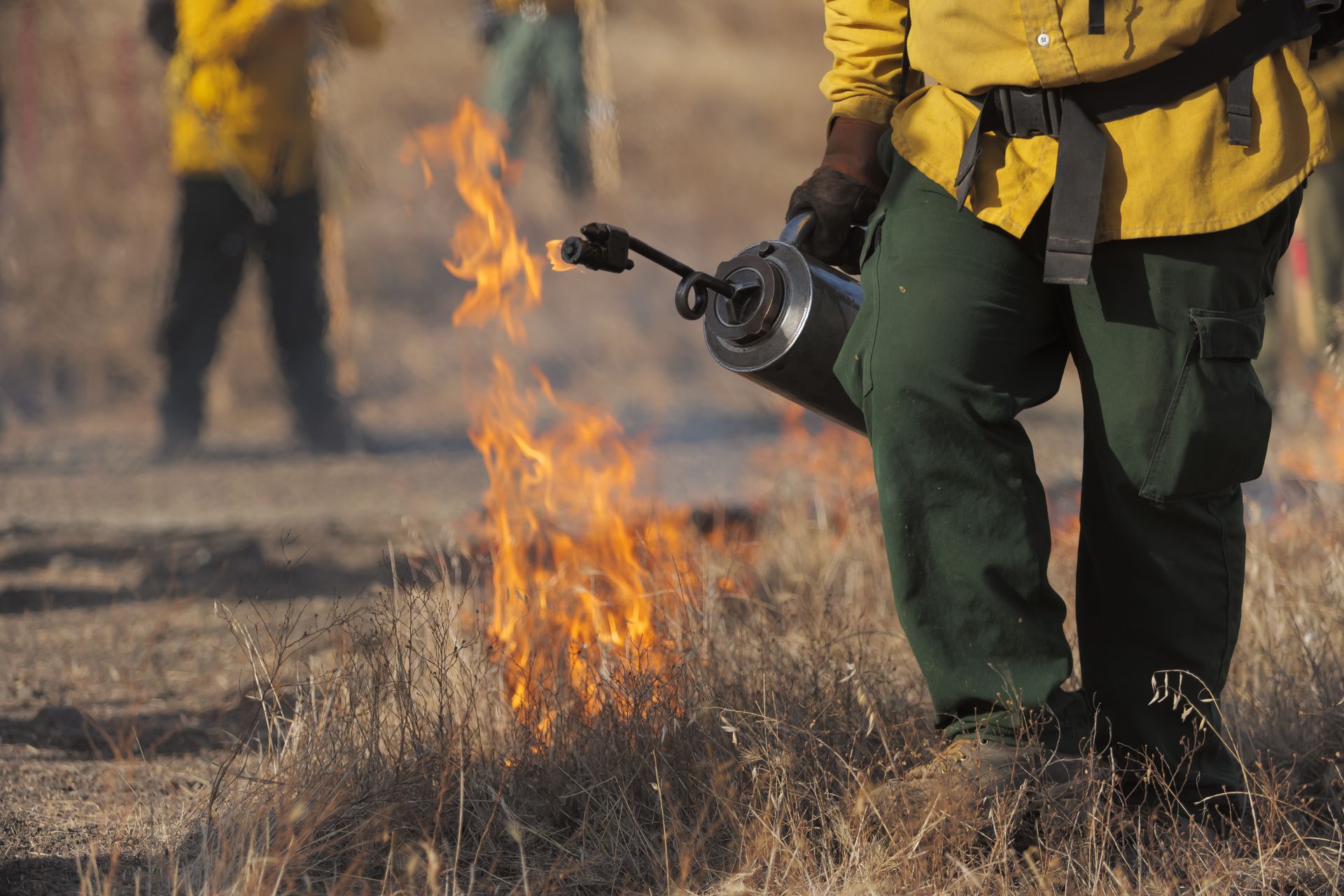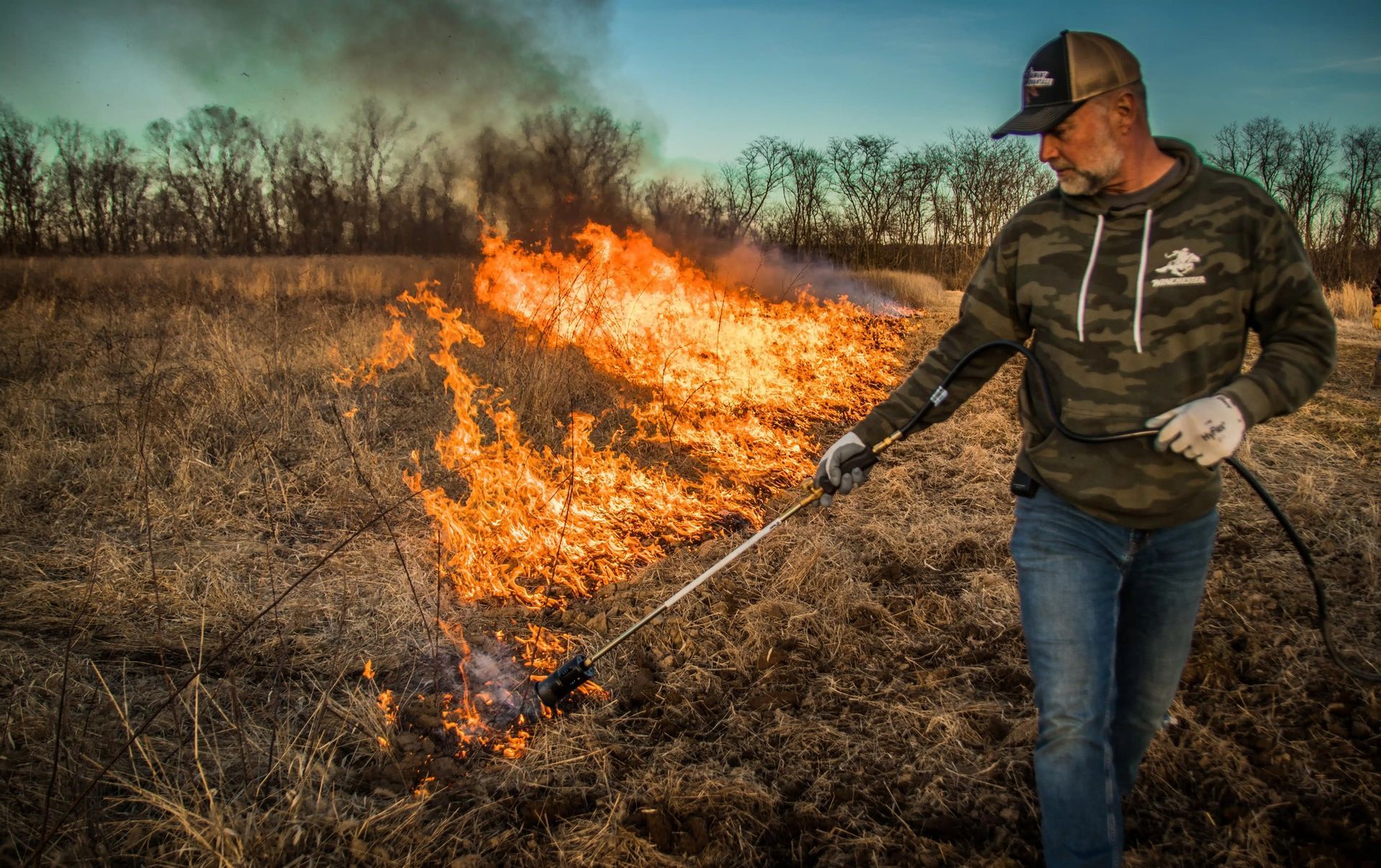Implementing Controlled Burns: A Step-by-Step Guide for Landowners
Implementing Controlled Burns: A Step-by-Step Guide for Landowners

Implementing Controlled Burns: A Step-by-Step Guide for Landowners
Controlled burns, also known as prescribed fires, are an essential tool for maintaining healthy ecosystems and enhancing wildlife habitats. When used correctly, this practice can rejuvenate overgrown land, improve soil health, and create an ideal environment for species like whitetail deer and wild turkey. Here’s how to safely and effectively implement controlled burns on your property.
Benefits of Controlled Burns
- Improved Habitat: Fires remove old vegetation, promoting the growth of native plants that wildlife depend on for food and shelter.
- Soil Health: Burned plant material decomposes, returning nutrients to the soil.
- Weed and Pest Control: Fires help eliminate invasive species and pests, giving native plants and animals a chance to thrive.
- Reduced Fire Risk: Clearing out dry vegetation reduces the likelihood of uncontrolled wildfires.
Planning Your Controlled Burn
- Set Goals: Determine your purpose—whether it’s to improve wildlife habitat, prepare a field for planting, or control invasive species.
- Assess the Property: Identify potential hazards like structures, power lines, or neighboring properties.
- Obtain Permits: Check local regulations and secure necessary permits. Work with state forestry or wildlife agencies for guidance.
- Develop a Burn Plan: Outline the specifics, including weather conditions, burn area, and safety measures.
Safety First
- Team Up: Never conduct a burn alone. Assemble a team of experienced individuals who understand fire behavior.
- Have Equipment Ready: Use tools like drip torches, fire rakes, and water sprayers.
- Monitor Weather Conditions: Ideal conditions include low wind, high humidity, and mild temperatures.
- Establish Firebreaks: Create clear boundaries around the burn area to prevent the fire from spreading.
Executing the Burn
- Ignition: Begin burning downwind to establish a safe perimeter before progressing upwind.
- Monitor Constantly: Keep an eye on the fire's behavior and have a plan for extinguishing it if necessary.
- Post-Burn Assessment: Once the fire is out, evaluate the results and take notes for future burns.
Seek Professional Help
If you’re new to controlled burns, consider hiring professionals or attending workshops to gain experience. Organizations like your local Department of Natural Resources or conservation groups often provide training.
Conclusion
Controlled burns are a powerful tool for landowners looking to manage their property effectively. By following these steps and prioritizing safety, you can create a healthier, more productive environment for wildlife and your land.



